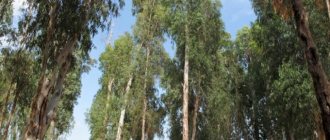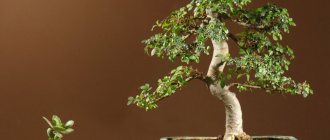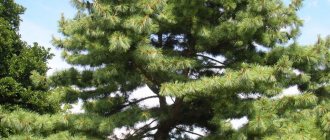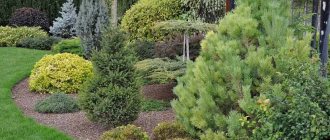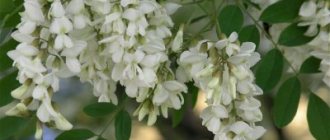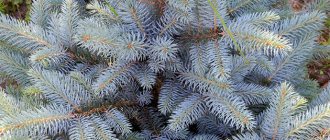- October 14, 2018
- Trees and shrubs
- Ekaterina Ryzhkova
What does mulberry look like? What kind of plant is this?
Representatives of the mysterious Mulberry family are found throughout the globe. Cow tree, rubber tree, bread tree, ficus tree and, finally, mulberry tree - they are all from this family. Giant deciduous and evergreen trees, herbaceous perennials and vines inhabit vast areas of the earth. What mulberry is, we will find out below.
A little history
Agree, the mulberry looks great in the photo! This plant is widespread in the southern regions and central zone of the CIS and the Russian Federation. Its fruits are used as food, and its leaves are fed to silkworms, whose cocoons are used to obtain natural silk threads.
In China and Central Asian countries, mulberries (photo presented in the article) are dried for future use and fed to elderly parents to prolong their life. It is known that in Central Asia this plant is called the king berry or king tree for its medicinal properties.
There are approximately 16 species of mulberry tree, which are common in temperate and subtropical climate zones. Mulberry grows well in Bulgaria, Russia, Azerbaijan, Romania, Ukraine, Armenia and other countries of North America, Asia and Africa.
It is believed that the black mulberry was distributed throughout the world from Southwest Asia, and the white mulberry from China. The history of using the leaves of this plant for growing silkworms goes back more than 4000 years. People ate the fruits even before the events described in the Bible. Did you notice that the mulberries in the photo are shaped like blackberries? They are very useful and are used as a natural antiseptic.
The long journey of the “berry of life” to Europe
Silkworm caterpillars feed on mulberry leaves. According to legend, the cocoon of one of them dates back to about 3 thousand years BC. e. ended up in the tea of the Chinese princess Xi Ling Shi, which as a result allowed China to take possession of the secret of silk production. For a long time, this secret was kept in the strictest confidence, and attempts to smuggle silkworm eggs (as well as mulberry seedlings themselves) outside the country were punishable by death.
Only in the 4th century AD. e. silkworms were presented to the king of Bukhara by his future bride, after which silk, and with it mulberry, appeared in:
- Byzantium;
- Venice;
- France and Russia.
The mulberry tree is a sacred plant of the East. It is used to make amulets against evil spirits and amulets symbolizing respect for older relatives.
During the reign of Ivan the Terrible, valuable fabric was produced at a silkworm factory special for royalty. Later, under Peter 1, cutting down the mulberry tree was prohibited, and the scope of its use expanded: musical instruments, household utensils and some household items began to be cut from durable and pliable wood.
Silkworm
Description of the plant
Everyone should see a photo of a mulberry. This plant belongs to the genus of deciduous trees of the Mulberry family, as discussed above. People breed it mainly for its leaves - the basic food for silkworms and as a fruit crop. There are 17 species in the genus, but three are most often used. The berries are a cluster of bulk grains with small grains, pulp and skin.
There are a large number of species, varieties and forms, among which white, red and black mulberries stand out for their fruits. All species are deciduous, fast-growing dioecious plants, distinguished by the heterogeneity of leaf shapes, which, even on a single branch, can be five-, three-fingered or whole heart-shaped.
In all parts of the mulberry tree, milky sap flows, released when the plant tissue is damaged. The fruits are similar to blackberries or raspberries, in some cases they do not have seeds, in others they contain them. As can be seen in the photo, mulberry fruits reach a length of 2-3 cm and have the outline of drupes. These berries are sweet, juicy, and have a pleasant aroma. The first fruits begin to ripen in mid-July. The base ripening period is late July and early August.
Mulberry propagation methods
The mulberry tree reproduces both by seeds and vegetatively, that is, by lignified or green cuttings, root suckers, grafting, layering.
Seed propagation method
In the second half of October, the berries from the current year's harvest are cleared of pulp. Soak for 1–2 hours in a solution of a growth stimulator (for example, Zircon).
Small mulberry seeds must be thoroughly cleaned of pulp.
When planting in spring, the seeds must be stratified for 1–2 months - for this, the seeds are placed in the freezer. If for some reason stratification was not carried out, the seeds must be kept in ice water for a day before sowing, and then in water at a temperature of 50ºC for the same period.
Sowing seeds:
- The beds prepared in a sunny place are spilled with a fertilizer solution for fruit and berry crops.
- Seeds are sown to a depth of 3–5 cm.
- The bed is watered and covered with a layer of mulch. When planting in autumn, the mulch layer is increased to prevent the seeds from freezing.
- All care for mulberry seedlings consists of timely watering and fertilizing, weeding the beds of weeds.
- By autumn, when the seedlings are strong enough, they are planted at a distance of 3–5 m or in their permanent places.
In the 5th–6th year, the seedlings enter the fruiting period.
Plants grown from seeds most often do not inherit all the characteristics of the mother plant.
One of the disadvantages of seed propagation is that the seedlings may not completely or not at all inherit the characteristics of the mother plant, which is why such specimens are most often used as a rootstock.
Vegetative methods of propagation
Reproduction by plant parts is more efficient and allows the daughter plant to retain all the characteristics of the original one.
Propagation by cuttings
Propagation by cuttings is a labor-intensive process. This requires the creation of a comfortable environment in greenhouses: the installation of fog-forming installations. In addition, only self-rooted mulberry plants can be propagated in this way. Mulberry grown from cuttings completely inherits the characteristics of the mother plant.
- Green cuttings. During the period of intensive growth (June-July), cuttings 15–20 cm long with 2–3 buds are cut. It is recommended to leave 2-3 leaves on the cuttings, cutting them in half. In a greenhouse with high humidity, the cuttings are planted in fertile soil at an angle of 45º, deepened by 3 cm. Planting in open ground takes place next spring, when the seedlings have acquired a branched root system and become stronger.
- Lignified cuttings are cut at the same time as green ones. The order of their cultivation and planting is also maintained. The main difference from green cuttings is the longer rooting process.
Reproduction by offspring
Many plants have the ability to form root shoots if the main trunk is damaged - this process allows the plant to avoid death. A strong mulberry root shoot will allow you to grow a new specimen to replace the dead one. Excess root shoots can be cut out and removed, or, dug up along with the root system and shortened by 1/3, planted as seedlings. Mulberry trees propagated in this way inherit the characteristics of the mother plant.
Graft
In general, mulberries can be grafted using all available methods, but copulation is considered the simplest and most successful - cutting grafting. The copulation procedure itself is of two types:
- Simple copying. The rootstock and scion are fused with the same thickness: on the rootstock and scion cuttings, oblique cuts equal to 4 diameters of the rootstock/scion are made between the two buds. After which the sections are combined, and the splice area is tied with some elastic material (for example, budding tape).
- Improved copulation. On the cuts of the rootstock and scion, the tongues are cut: stepping back 1/3 from the edge of the cut and cutting to the middle of the cut on the rootstock up and on the scion down. After which these tongues are combined and also tightly tied with tape.
Improved copulation requires the gardener to have some tree grafting skills
Fruit composition
Have you looked at the photo of the mulberry? Its ripe berries contain resveratrol, a plant antioxidant. This substance protects the plant from various bacteria, parasites and fungi. The fruits are 85% water, they contain fats, ash, dietary fiber and carbohydrates, vitamins B1, B3, A, PP, K.
Folic acid, riboflavin, tocopherol, pyridoxine, choline, ascorbic and pantothenic acid are present. The beneficial properties of mulberry (see photo of the fruit below) are determined by the presence of macroelements - calcium, phosphorus, potassium, sodium and magnesium.
Rules of care
It is very important not only to follow the correct planting process, but also the rules for caring for mulberry seedlings.
The tree does not need special care, but there are mulberry diseases and pests that, if they occur, should not hesitate to adopt methods to combat them.
In order to reduce the risk of possible infection of a young tree with diseases, systematic treatment of mulberry by spraying the foliage and trunk is necessary. Fungicidal and insecticidal preparations are used as treatment agents.
The spraying procedure is carried out from April until the buds begin to bloom and in October, after the growing season ends.
Using a nitrafen solution, you can eliminate pests and get rid of diseases. In the spring, it is best to spray the tree with urea using a 7 percent solution. This will help neutralize pests and pathogenic microorganisms.
Application
People often look at mulberry photos with curiosity. The first to use this plant in medicine was the Persian medieval scientist, philosopher and doctor Abu Ali ibn Sina - Avicenna.
All parts of the tree are suitable for healing - bark, fruits, roots, and leaves. Mulberry is an amazing natural antiseptic and can be used as a diuretic, anti-inflammatory, diaphoretic, expectorant and astringent.
It is used in the production of vinegar, citric acid and sugar. This unique plant in folk medicine can bring significant benefits in the treatment of many ailments. Fully ripe berries are an excellent laxative, good for constipation. Green fruits are better to eat when you have diarrhea.
If you dilute mulberry juice with boiled water, rinse your mouth with it if you have a sore throat. As a result, the disease will quickly disappear. An infusion of mulberry bark and berries is effective for bronchitis, bronchial asthma, and acute respiratory infections.
Decoctions of roots and bark in the form of a diuretic are used for hypertension. The leaves are infused and infusions are drunk to reduce the temperature during fever. For myocardial dystrophy and heart disease, it is recommended to consume berries in large quantities. A medicinal powder is prepared from the bark, which is then mixed with oil. As a result, a remedy is obtained for healing ulcers, wounds, and cuts. This ointment eliminates bruises instantly.
The beneficial properties of mulberry berries (photo presented) can be listed endlessly. Eating them helps in treating impotence and prostatitis, to alleviate menopausal syndrome and with uterine bleeding.
How to care for mulberries
Many gardeners in the southern regions of the country consider caring for mulberries unnecessary, but in Central Russia it will be quite difficult to grow a healthy fruit-bearing mulberry tree without special measures. And the more complete and high-quality the activities carried out, the greater the gardener’s chances of getting the desired harvest of mulberries.
Watering and fertilizing
Mulberries do not require watering, except perhaps during the driest times. Starting in July, any artificial soil moisture should be stopped. When grown on fertile soil, fertilizing is usually not applied. If the land is quite poor, the mulberry tree needs to be fed. This can be done once per season, in the spring. To do this, use organic matter, for example, manure, spreading it in the root zone. You can also feed the mulberry tree in early spring with complex mineral fertilizers, for example, nitrophoska or urea.
Trimming and shaping
The further north the mulberry growing region, the lower in height the tree should be formed. Based on this, pruning is done. In the southern regions, the mulberry tree is not pruned at all; in the more northern regions, a spreading, cap-shaped crown is formed on a low trunk. In the northern regions, preference is given to bush forms, which, as a rule, are more winter-hardy.
Many gardeners grow mulberry as an ornamental tree. This is especially true for varieties with a weeping crown. Such trees are pruned in accordance with the chosen crown shape, shortening the annual growth and maintaining the required dimensions. In addition, mulberries are pruned for sanitary purposes, removing old, dried and broken branches, cutting out diseased and pest-damaged shoots. This pruning is usually carried out at least 2 times per season, after winter and at the end of leaf fall.
Protection from diseases and pests
Mulberry is quite often attacked by pests, and diseases on it are not uncommon. The most common diseases on mulberries are:
- Verticillium wilt (wilt). It manifests itself in curling of leaves, drying of shoots and ultimately leads to the complete death of the tree. There are no treatments for this fungal disease. As preventive measures, it is recommended to use disease-resistant varieties, as well as timely application of nitrogen fertilizers that increase plant immunity. Diseased mulberries are uprooted and burned, and the soil at the site of their growth is treated with a 40% formaldehyde solution. For 10 years after the disease is detected, no fruit trees can be planted in such a place.
- Bacteriosis. A disease that exclusively affects mulberries. Found in all regions where mulberry grows. It manifests itself in the appearance of spotting on leaves and young shoots. Then the spots turn brown and the leaves rot through. This disease has no cure. Diseased mulberries are pruned, severely affected trees are uprooted and burned, and neighboring plantings must be sprayed with a 3% solution of Bordeaux mixture. The same spraying as a preventative measure should be done in early spring.
- Cylindrosporeosis. A fungal disease that attacks mulberry leaves. It appears in the form of small brown spots that grow over time. The disease leads to the death of leaves and premature leaf fall. The spread of the disease is facilitated by high humidity, so it is necessary as a preventive measure to ventilate the mulberry crown and prevent it from thickening. In early spring and after leaf fall, it is necessary to treat the plantings with preparations containing sulfur. The fungus spores overwinter in fallen leaves, which must be collected and burned.
The most common insect pests that attack mulberries are:
- Spider mite. It feeds on the juices of young leaves, on the reverse side of which it lives. If the mite population is large enough, the mulberry tree is severely suppressed, the leaves turn brown, dry out and fall off. Ticks are especially dangerous during drought. A protective measure is the collection and destruction of plant debris in which the tick overwinters and whitewashing the trunks. In case of severe damage, the mulberry must be treated with Actofit.
- Comstock's worm. Quite rare in the territory of modern Russia, with the exception of certain regions of the Caucasus. The mealybug larvae attach themselves to young leaves and damage the bark of young shoots and mulberry buds. With a large population of scale insects, the mulberry tree is severely suppressed and may die. Pesticides are ineffective against this insect. They fight it using pheromone traps. The biological method based on the use of pseudoficus is also effective. This insect is a natural enemy of the mealybug. Prevention is cleaning and whitewashing the trunks, especially in those places where the mulberry bark has come off the tree trunk, as well as strict adherence to the rules of agricultural technology.
- American white butterfly. The caterpillars of this insect feed on mulberry leaves, entangling them in a thin web. If the population is large enough, the entire crown of the tree can be entangled in cobwebs. They fight the pest using approved insecticides (Decis, Karate, etc.). Light traps are installed for butterflies, and hunting belts are put on mulberries. Spider nests and egg laying sites are torn off and burned.
- Khrushchi. The larvae of these insects live in the soil and feed on young roots. Young mulberry seedlings suffer especially badly from them. They fight beetles with the help of preventive spraying of mulberries with Bombardir, Confidor, etc. Agrotechnical measures are also widely carried out aimed at reducing the number of both insects and their larvae, for example, sowing alkaloid lupine at the site of future mulberry plantings.
Preparing for winter
The most important thing is to protect the mulberry roots from freezing. Therefore, for the winter, the root zone must be covered with a thick layer of mulch. For this you can use sawdust, peat, humus. An additional layer of spruce branches is placed on top and covered with snow. Mulberry seedlings up to 3 years old must be insulated in the fall using spruce branches, additionally wrapping them with a layer of covering material on top.
It is better to bend long young mulberry shoots to the ground and cover them, otherwise they are guaranteed to freeze.
White
Many people enjoy looking at photos of white mulberries. As a rule, silkworm, white and multi-stemmed mulberries are cultivated to feed mulberry silkworms. The fruits of such a plant can be not only white, but also yellow, pink and even black. This variety received its name due to the light bark of the tree.
This plant is native to East and Asia Minor. This is a tall, fast-growing, long-lived tree with a dense, spreading or spherical crown. The leaves grow on the same tree in different configurations; they are yellow in autumn and dark green in summer. The berries of this type of mulberry deserve special attention - they have an unusually sugary taste.
It is unpretentious to conditions and soil - it grows well in urban environments, and its long roots help strengthen ravines and slopes. Transplantation is easily tolerated at a young age. This species can withstand severe frosts (down to -30 °C). If young branches are frozen, they are cut off. Then they quickly grow back, and the tree restores fruiting.
Gardeners also grow white mulberry as an ornamental plant: there are a large number of garden forms with spherical, weeping, dwarf, pyramidal, multi-stemmed crowns and various leaves. Picturesque forms are propagated vegetatively and by grafting.
It is known that this plant is used for group planting, single planting and for creating a dense hedge, as it tolerates regular pruning perfectly.
Planting mulberries in open ground
The first thing to do is to determine a comfortable place for the future tree. It should be light, protected from winds, the soil should have sufficient moisture, contain a moderate amount of salts and not be swampy. It is better to place the tree in the corner of the site, because The fruits on the branches of the tree do not last long, and then fall to the ground. This way the mulberry will not cause you any inconvenience. We recommend purchasing seedlings from three years old that have already produced their first fruits, because... Trees bear fruit only with female flowers, and it is impossible to determine the sex of a plant until three years old.
What time to plant
Although you can also plant in the spring, it is recommended to do this in the fall (before the rainy season begins): a tree that has survived the frost will delight you with its external beauty and fruits for a long time.
Planting mulberries in autumn
The pit should be ready 15-20 days before planting and the roots of the tree should easily fit into it. If the soil is rich in useful substances, then the hole needs to be made about 50 cubic cm, but if the soil is poor, then you should dig so that 5 kilograms of compost with one hundred grams of superphosphate fits. After application, the fertilizer must be sprinkled with soil.
Landing algorithm:
- place the roots of the seedling in the pit,
- straighten them and dig them in, shaking the trunk periodically;
- compact the disturbed soil and soak it with twenty liters of water;
- When the soil has absorbed all the water, cover the surface with mulch.
If the seedling is weak, then before planting, drive a support into the middle of the pit, and if the soil is heavy and clayey, then build a drainage layer from broken brick, pebbles or expanded clay - it will help remove moisture out and give the plants the opportunity to breathe normally.
Spring planting
The rules and algorithms for autumn and spring planting are almost the same, the only difference is that in order to plant a tree in May, a foundation pit is prepared for it in September, and compost is then poured into it. In the spring, you can safely begin to plant young plants in already fertilized soil; planting should be completed before the end of the third ten days of April.
Black
The article provides a photo and description of the mulberry. It is known that black mulberry comes from Afghanistan and Iran. In hot countries, it looks like a large tree up to 15 m high with a spreading, wide crown covered with large leaves. Its black shiny fruits are very tasty and juicy, sweet and sour.
This deciduous summer green tree has a low crown. It is usually much larger in width than in height. The trunk is often curved, twisted or crooked. The bark is orange-brown or dark brown with cracks. The leaves are approximately 8 cm wide and 7-18 cm long, heart-shaped and broadly oval, with a slender short apex, deeply notched at the base, irregularly crenate along the edge, slightly lobed or serrate-crenate.
On the upper side, the leaves of black mulberry are pubescent, rough, the color varies from light green to bright green. This is a monoecious plant. Men's earrings are thick and short, pale green. Female inflorescences are even shorter. Fruits are formed not from carpels, but from parts of the flower cover. Blooms in May-June.
How to plant mulberries
In the middle zone, planting mulberries in open ground requires subsequent care and is associated with a certain risk. After all, this is a southern plant. However, under favorable conditions, the mulberry tree will grow and bear fruit well even in such a non-subtropical region. Planting and caring for mulberries is not particularly difficult.
Selection and preparation of a landing site
The mulberry tree is afraid of the north wind, so the ideal place for planting would be the southern slope of the hill. Mulberry does not have any special requirements for soil composition; it grows well on chernozem and loams; only highly saline and heavy clay soils are not suitable for it. You should not plant mulberries in wetlands where melt or rainwater accumulates or in places where groundwater comes too close to the surface.
Mulberry seedlings are planted in early spring, while planting holes are prepared in the fall so that the soil becomes loose and saturated with air. The root system of mulberry seedlings is not significant in size, so the planting holes are dug small, about 0.5 m deep, 0.7 m in diameter. The excavated soil is saved. Before planting, a bucket of humus is added to it and the roots of the seedling are covered with such nutritious soil.
Preparation of planting material
When choosing mulberry seedlings, you should first of all pay attention to its origin. A tree brought from the south is unlikely to feel good in changing conditions, for example, in the Moscow region. Therefore, it is better to give preference to zoned varieties. In addition, the seedling must look healthy, have a well-developed root system and show no signs of the beginning of the growing season.
It must be remembered that the mulberry tree is dioecious. To guarantee a harvest, it is better to choose grafted three-year-old seedlings, since they have already produced fruit. Planting younger mulberry trees carries the risk that they will all end up being the same sex and will not bear fruit.
Landing rules
You can start planting mulberries after the soil has warmed to + 5 °C. An earthen mound is poured onto the bottom of the planting hole, and the seedling is placed strictly vertically on top of it, spreading the roots along the slopes. Nearby, a peg is driven into the bottom of the hole, which will serve as a support for the future mulberry tree for the first time. After this, the hole is filled with prepared soil, compacting it slightly, otherwise voids may form in the ground and some of the roots may simply hang in the air. The root collar of the mulberry seedling is leveled to the soil level, the trunk is tied to a peg - a support. Then the tree trunk circle is shed generously with water and mulched.
To prevent plants from competing with each other, when planting, it is necessary to maintain intervals between neighboring mulberry trees. The crown of the mulberry is wide and spreading, so between neighboring mulberry trees there should be a distance of at least 5 m, and if the mulberry is formed in a bush form - at least 3 m.
"Black Baroness"
You can easily study mulberry varieties using photos. What is the Black Baroness variety? This is a dioecious deciduous tree with a spherical, moderately dense crown. Its flowers are collected in spikes, dioecious. The leaves are simple, whole or three-, five-lobed.
The fruit is a one-dimensional, large, juicy, edible, complex, sugary drupe of black, thick color. The taste is very pleasant, sweet, practically without acid. The aroma is inconspicuous.
Fruiting is regular and abundant; the berries ripen in June or July. It has high productivity. The berries tolerate transportation satisfactorily. Fresh fruits can be stored without spoilage for 6 to 12 months. The variety is unpretentious in terms of maintenance conditions and soil. Withstands frosts from -30 °C and below.
Types of mulberry formations
In this matter, the gardener can only be limited by his imagination, because this plant is very plastic, you can sculpt any fantastic shape from it, like plasticine - a pruner to help... here is this CORRECT high-quality CLATZ
Standard, non-standard, weeping formation... see photo below (photos are clickable!)
Black mulberry "Istanbul"
This is one of the mulberry varieties that produces large fruits. Tree up to 7 m high, tall. The crown is spherical and dense. It begins to bear fruit only in the 4th year. This mulberry has tiny flowers, collected in inflorescences in the form of a spikelet.
The leaves of the tree have the outline of an egg. It blooms in the last days of April. Ripe fruits are almost black in color, large, up to 3 cm in length. The ripening period is long: from mid-July to the end of August. The variety can withstand frosts down to -30 °C, and is unpretentious to conditions and soil.
Male and female mulberries
Mulberry is a crop whose representatives can be either monoecious or dioecious. Dioecious species are represented by male and female plants, and to obtain a harvest, both specimens must be present on the site.
Female mulberry inflorescences are dense “catkins”
How to distinguish a male plant from a female one:
- Fruiting. This method of determination involves a long wait for fruiting (4–5 years), which is one of its disadvantages. Fruits are set only on females. Of course, the method is unreliable, because the female plant may not have enough pollen to set fruit.
- The structure of inflorescences. The method is much more reliable, but requires minimal botanical knowledge or observation. Female inflorescences are spike-shaped “earrings”, where each flower contains a two-snouted pistil and a perianth of four leaves. Male inflorescences are slightly drooping and looser.
The inflorescences of the male mulberry specimen are loose, slightly drooping
On bisexual plants, both male and female inflorescences can be seen.
In order to speed up the process of recognizing the “gender” of the mulberry, it is recommended to purchase three-year-old seedlings that have already had their first offspring.
"Plodovaya-1"
Have you looked at all the photos of mulberries? This tree is extraordinary. What is the “fruit-1” variety? This is an early ripening variety that produces juicy and large fruits. It is already possible to harvest in June. Its most important advantages are its bright taste and long-term fruiting.
The berries of this mulberry are sweet with an attractive sourness. They have a dense consistency and do not wrinkle during transportation. A distinctive quality is that in rainy weather the white fruits turn pink. There is no need to be scared - this is normal.
What to cook from mulberries?
Mulberries are very tasty fresh; they are widely used in cooking, added to pies, yoghurts and desserts. The fruits make very tasty wine, vodka, liqueurs, syrups, tinctures, and artificial bekmes honey. Jams, preserves, pastes, compotes are made from mulberries, ice cream, sorbet, jelly, jellies and cocktails are made. The roots and leaves are used to prepare healthy and aromatic tea and medicinal mixtures.
Berries are combined with various products:
- Walnut;
- vanilla;
- wheat and rye flour;
- muesli and oatmeal;
- lemon;
- blackberries, black currants, elderberries;
- sugar;
- venison, game, hare;
- blackcurrant, elderberry and blackberry liqueur;
- port wine, cognac;
- cream, ice cream;
- cow's and soy milk;
- yogurt, butter.
Mulberry jelly
Ingredients:
- 4 tbsp. l. lemon juice;
- 2 cups mulberries;
- 3 tbsp. l. starch;
- ½ cup Sahara;
- 2 l. water.
Preparation:
- Remove the tails from the berries, rinse in cold water and drain in a colander.
- Grind the mulberries through a sieve or use a blender.
- Pour a glass of cold water over the starch.
- Pour water over the berry puree, add sugar and bring to a boil.
- Pour starch in a thin stream and mix, add lemon juice.
- When the mixture boils, remove from the stove.
- Pour the jelly into a jug and let cool.
Mulberry ice cream
Ingredients:
- 6 tbsp. l. yogurt;
- 1 banana;
- 100 g mulberries;
- 1 tbsp. l. rose jam.
Preparation:
- Rinse the berries and remove the stems, place in a blender bowl.
- Peel and chop the banana, add to the blender with the mulberries and grind until smooth.
- Add yogurt and jam to the mixture, beat again until smooth.
- Pour into molds and cover with cling film.
- Leave the ice cream in the freezer for 4 hours or overnight.
"Hartut"
Fans of mulberry wine are recommended to plant this variety in their dacha. It begins to bear fruit in the third year of life. Yields are stable and high. The berries of this tree are large (up to 5.5 cm) and black.
The thick juice obtained from them resembles the taste of Cahors. The variety is actively used in cooking and winemaking. It is easy to grow and disease resistant.
Above are the varieties that are intended for human consumption. However, there are still many decorative variations that can embellish the surrounding space. These include golden mulberry, Tatarian mulberry, weeping mulberry, spherical mulberry, and pyramidal mulberry. There are varieties that are grown in pots or small containers. The choice of variety will depend on what goals you are pursuing.
Composition and nutritional value of berries
Mulberry berries are a natural storehouse of vitamins and nutrients. Thus, mulberry fruits contain so much ascorbic acid that consuming 300 g of berries covers the daily requirement for it by 100%. The calorie content of mulberries is 40 kcal. 100 g of product contains:
- 2 g proteins;
- 0.5 g carbohydrates;
- 2.5 g fiber;
- 9 g mono- and polysaccharides;
- 86 g water.
The chemical composition of mulberry fruits is devoid of fats. Mulberry is rich in various vitamins, micro- and macroelements. All of them are vital for the body. The berries contain:
- retinol - stimulates immune function, regulates the functioning of the cardiovascular system, improves vision, promotes the regeneration of epidermal tissue;
- thiamine - responsible for the conduction of impulses along nerve fibers, regulates water-salt balance;
- tocopherol is an antioxidant that protects cells from the effects of free radicals and inhibits the aging process;
- pyridoxine - participates in metabolic processes, is responsible for the proper functioning of the liver and muscle structures;
- cyanocobalamin - affects the digestibility of proteins, participates in the secretion of white blood cells;
- phylloquinone - affects protein synthesis and blood clotting.
The fruits of the mulberry tree are rich in various microelements. They include iron, potassium, magnesium, zinc, selenium, sodium, copper, phosphorus.
Beneficial features
Mulberries contain a large amount of potassium, the lack of which in the body can cause glycemia. Therefore, doctors prescribe mulberry extracts when potassium metabolism disorders occur.
It is also worth eating mulberries for those people who have chronic swelling associated with disorders of the heart (defects of varying severity, myocardial dystrophy) and kidneys. If you eat it regularly, shortness of breath, pain in the heart will decrease and its rhythm will normalize.
For anemia and metabolic disorders, you need to eat mulberries for two weeks in such quantities until “her eyes can no longer see.”
A mixture of white mulberry (1 kg) and white honey (200 g) will help get rid of prostatitis and restore male strength. The components must be thoroughly ground. The mixture should be stored in the refrigerator in a sealed container. You need to take one dessert spoon once a day before bedtime.
Caring for mulberries immediately after planting
The first two years of a tree’s life in a new place, it requires regular watering (10 liters of water per day during dry periods) and regular (once a season) fertilizing. In the spring, during the period of bud break, nitroamaphoska is added at the rate of 50 grams per 10 liters of water.
In summer, complex fertilizer is applied at the rate of 20 grams per 1 square meter. In the fall, the ground under the mulberries is dug up and ash is added to it at the rate of 200 grams per square meter. A positive effect can also be expected when adding organic matter: slurry or bird droppings.
Those who have already planted at least one mulberry tree on their plot have the opportunity to see it bloom every year. Unfortunately, this flowering cannot be called violent, and not because there are few flowers, but their appearance is not very pleasing to the eye of the demanding public.
10 best frost-resistant peach varietiesWinter-hardy varieties of apricots: the best, tasty, frost-resistant varieties
How to plant trees in the fall: timing, planting stages and varieties
The inconspicuous appearance of mulberry flowers is more than compensated by the excellent taste of the berries, which grow on every tree in countless quantities.
Pests and diseases
Mulberry is quite resistant to pests and diseases. The following diseases can harm trees and shrubs:
- root rot
- brown spot
- powdery mildew
- bacteriosis
- tinder fungus
- curly small-leaved
The last two mulberry diseases cannot be cured, so it is important to ensure that the tree bark is not damaged and protect it from sucking insects. Other diseases can occur when there is an excess of nitrogen, thickening of the crown and a lack of nutrients.
The most dangerous pests for mulberries are:
- mole cricket
- spider mite
- May beetle larvae
- wireworm
- comstock worms
- white American butterfly larva
The last pest on this list is capable of leaving a tree without leaves. Branches with nests are cut and burned. Among the chemicals for protection, you can use chlorophos, which protects the tree well from the mulberry moth, whose larvae also love mulberry leaves. Spraying is carried out during the period of swelling of the buds, which is when the caterpillars emerge from the eggs. Birds are very fond of sweet berries; in order to protect the harvest from them, agrofibre or fine mesh is thrown over the tree.
